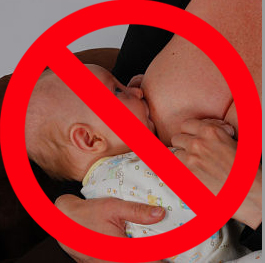Archive for the ‘Parenting for Peace’ Category
 So there you are one afternoon, at the end of your rope with an out-of-control three-year-old. You know you won’t spank him, and you have become mindful of avoiding shame-based measures, so what’s left? Is “Time Out” the answer? At risk of bringing on the wrath of parents everywhere, my answer is no. Time-outs were conceived as a more humane alternative to spanking, but the problem is, they land a blow to the brain and psyche rather than to the bottom.
So there you are one afternoon, at the end of your rope with an out-of-control three-year-old. You know you won’t spank him, and you have become mindful of avoiding shame-based measures, so what’s left? Is “Time Out” the answer? At risk of bringing on the wrath of parents everywhere, my answer is no. Time-outs were conceived as a more humane alternative to spanking, but the problem is, they land a blow to the brain and psyche rather than to the bottom.
Right at the moment when the child is overwhelmed by a flood of emotions he cannot manage, and he most needs the regulating presence — that is, close physical presence — of his attachment figure, he’s banished to his room or his “Naughty Chair” or his “Thinking Rug” or his [fill in the blank with any of a list of prettied-up names people have devised for this particular form of exile]. (more…)
Tags: attachment, brain development, discipline, Gordon Neufeld, shame, social brain, spanking, time-out
Posted in Parenting for Peace | No Comments »
 Okay, I’ll come out with it, finally, after all these years: I was desperately disappointed with The Vagina Monologues! I’m only now fessing up and lodging my opinion that the empress Eve Ensler has no new clothes on. In her supposedly ground-breaking play…two hours of dialogue and monologue dedicated (supposedly) to the sexual dimension of a woman’s psycho-anatomical makeup…there is not one single mention of <gasp> menstruation. No period, period.
Okay, I’ll come out with it, finally, after all these years: I was desperately disappointed with The Vagina Monologues! I’m only now fessing up and lodging my opinion that the empress Eve Ensler has no new clothes on. In her supposedly ground-breaking play…two hours of dialogue and monologue dedicated (supposedly) to the sexual dimension of a woman’s psycho-anatomical makeup…there is not one single mention of <gasp> menstruation. No period, period.
Oh, there are plenty of other reasons to not embrace TVM (or as Camille Paglia calls it, “the perversion of feminism that Ensler represents”), but I’m focusing on this one. Period. A woman’s attitude toward her menstrual period impacts how she lives, labors and births. Let’s outgrow the tired cultural perversions about our creative power as women! (more…)
Tags: Alisa Vitti, camille paglia, Dr. Oz, eve ensler, Jackie Guiliano, Jeannine Parvati Baker, menstruation, natural childbirth, period power, PMS, vagina monologues
Posted in Parenting for Peace | No Comments »

Yes, that’s really Ian!
Yes, I spanked my son. It was almost twenty years ago but I still remember it vividly. Ian was six or seven and was stubbornly, defiantly ignoring me right to my face. (About what? Now that I cannot recall!) Something primitive inside me uncoiled and I was suddenly spanking him. I regretted it immediately and ever since — not just for the obvious reason of having been violent with him, but also for the sliver of his respect I lost in that moment.
We lose the admiration of our children when we “lose it.” It’s a mammalian thing: all animal behaviorists know that our ability to have authority over — and thus the ability to train — a dog or a horse is severely eroded if the animal sees or feels us get angry. Credible leaders don’t lose their composure, it’s as simple as that. Of course children aren’t dogs, but we can learn so much from understanding the mammalian similarities! Our children’s respect and admiration are among the most potent tools in our parenting toolbox, and if we do things to erode them, we set ourselves up for trouble down the line. (more…)
Tags: brain development, imitation, spanking
Posted in Parenting for Peace | 2 Comments »
 Author Ray Bradbury pointed out, chillingly, “You don’t need to burn books to destroy a culture — just get people to stop reading them.” Similarly, you don’t need to actually ban nursing to decrease the incidence of breastfeeding — just make it more and more difficult to do.
Author Ray Bradbury pointed out, chillingly, “You don’t need to burn books to destroy a culture — just get people to stop reading them.” Similarly, you don’t need to actually ban nursing to decrease the incidence of breastfeeding — just make it more and more difficult to do.
The ways our culture makes breastfeeding ever more difficult range from the insidiously subtle (hospitals’ goody-bag full of formula) to the outrageously overt (Bill Maher’s infamous rant equating breastfeeding — “a private thing” — with “farting or masturbating or pissing”).
Bottled Up! from The Milky Way on Vimeo. (Includes the aforementioned Maher rant)
Image:
Mothering Touch used under its Creative Commons license
Tags: Andrea Potos, Bill-Maher, breast pumping, breastfeeding, cultural discourse, Facebook, Mama Eve, nursing, The View, Whoopie Goldberg
Posted in Parenting for Peace | No Comments »
 Along with a good supply of onesies, I routinely counsel expectant parents to stock up on trust. Parenting is a daunting safari into the unknown, and trust is the anxiety antidote when life outruns the reach of our techno-savvy that has us convinced we can figure out and control everything in our lives.
Along with a good supply of onesies, I routinely counsel expectant parents to stock up on trust. Parenting is a daunting safari into the unknown, and trust is the anxiety antidote when life outruns the reach of our techno-savvy that has us convinced we can figure out and control everything in our lives.
I define trust as “calm reliance upon processes outside of your immediate perception and control,” and it is one of the seven principles that weave through my book Parenting for Peace. For those of us weaned on the information revolution, trust is probably the most subversive P4P principle of them all. When it isn’t overwhelming us, our instant access to infinite amounts of data on any topic has us convinced that by virtue of our techno-savvy, we can indeed figure out and be in charge of every aspect of our lives.
But Life will always manage to outrun your techno-management, trust me. (more…)
Tags: information overwhelm, Robbie Davis-Floyd, technology, teens, trust, ultrasound
Posted in Parenting for Peace | No Comments »
No, I haven’t dropped off the face of the earth. Long dry blog spell is due to my recent 3-week teaching trip to Brazil, from which I just returned. It was wonderful… people SO receptive to the Parenting for Peace message… not to mention the gorgeous country and wonderful folks.

…at a health promotion conference for nursing students, Universidade Federal de Juiz de Fora

With colleague / interpreter Laura Uplinger…
Now I’m in the “re-entry” mode that happens for me after travel. Not just jet lag…but life lag. Listening to the bodymind’s call for a pause — in the interest of living and working with sustainability.
I’ll soon get back into a blogging rhythm, and in the meantime, I invite you to use the tag cloud on my homepage to search for topics of your interest… and if you’d like to see some posts / photos from the Brazil trip, they are on my Facebook profile (as opposed to FB Parenting for Peace page). If you’re patient and scroll way down you’ll even see my taste of carnaval!
Tags: Brazil, rhythm, sustainability
Posted in Parenting for Peace | No Comments »
I pointed out in Part 1 that our culture harbors a common, dangerous misconception about teens — that they need us to drop the reins and let them “do their thing.” But in terms of their brain and social development, they are as tender as they were as infants. So, we need to remain their active guides and examples. Adults staying actively, enthusiastically involved in the lives of their children and students is one of the best teen addiction prevention measures. In addition to the 3 guidelines offered in Part 1, what else do teens need from us during this time when our window of potent influence is so soon to close? (more…)
Tags: addiction, depression, drugs, Gabor Mate, resilience, self-esteem, self-regulation, suicide, teens, texting
Posted in Parenting for Peace | No Comments »
A common misconception is that teens need us to drop the reins. But neurodevelopmentally, they are as tender as infants, so teens need us still, very much. One of the most important books I’ve encountered about parenting during early adolescence is poignantly and aptly titled Our Last Best Shot. Author Laura Sessions Stepp spent two years finding out what teens need for future psychosocial wellbeing and success. She admits in the book that she “wanted to minimize the significance of parents and emphasize the importance of other adults.”
While she discovered the important role other adults do indeed play in the healthiest outcomes for adolescents, Stepp’s conclusion was clear about what teens need: (more…)
Tags: adolescent brain, teenager, teens
Posted in Parenting for Peace | No Comments »
There is (rightly) a lot of buzz these days around the insidious, incremental erosion of a woman’s right to choose whether she will give birth to a child she has conceived, but virtually nobody is talking about the drastic erosion of a woman’s right to choose how she will give birth to her term baby. Who is talking about the shocking erosion of a woman’s right to choose a VBAC (vaginal birth after cesarean)?
(more…)
Tags: birth, C-section, cesarean, choice, informed consent, maternal mortality, placenta accreta, uterine rupture, VBAC
Posted in Parenting for Peace | No Comments »
 “But they’re so awful!” This is a response I often hear from parents when I recommend Grimms’ fairy tales as reading fare for their children. While Grimms’ is all the rage these days for adults, parents often recoil at the idea of regaling their young children with stories of orphans and witches, kidnappings and murders — at bedtime no less. Understandable. But savvy parents understand that fairy tales are soul food for children. They nourish the developing psyche in complex ways. But the real ones, not the prettied-up, pasteurized ones.
“But they’re so awful!” This is a response I often hear from parents when I recommend Grimms’ fairy tales as reading fare for their children. While Grimms’ is all the rage these days for adults, parents often recoil at the idea of regaling their young children with stories of orphans and witches, kidnappings and murders — at bedtime no less. Understandable. But savvy parents understand that fairy tales are soul food for children. They nourish the developing psyche in complex ways. But the real ones, not the prettied-up, pasteurized ones.
The Brothers Grimm have been getting lots of press lately, and not just because they turned 200 last month. Popular culture has been plundering them with varying degrees of success — and so their names and their twisty story lines are on our minds more than ever. But many people assume, Oooh, not for our kids! (more…)
Tags: child psychology, children's entertainment, fairy tales, hurrying children, television, violence
Posted in Parenting for Peace | No Comments »
 So there you are one afternoon, at the end of your rope with an out-of-control three-year-old. You know you won’t spank him, and you have become mindful of avoiding shame-based measures, so what’s left? Is “Time Out” the answer? At risk of bringing on the wrath of parents everywhere, my answer is no. Time-outs were conceived as a more humane alternative to spanking, but the problem is, they land a blow to the brain and psyche rather than to the bottom.
So there you are one afternoon, at the end of your rope with an out-of-control three-year-old. You know you won’t spank him, and you have become mindful of avoiding shame-based measures, so what’s left? Is “Time Out” the answer? At risk of bringing on the wrath of parents everywhere, my answer is no. Time-outs were conceived as a more humane alternative to spanking, but the problem is, they land a blow to the brain and psyche rather than to the bottom. Okay, I’ll come out with it, finally, after all these years: I was desperately disappointed with The Vagina Monologues! I’m only now fessing up and lodging my opinion that the empress Eve Ensler has no new clothes on. In her supposedly ground-breaking play…two hours of dialogue and monologue dedicated (supposedly) to the sexual dimension of a woman’s psycho-anatomical makeup…there is not one single mention of <gasp> menstruation. No period, period.
Okay, I’ll come out with it, finally, after all these years: I was desperately disappointed with The Vagina Monologues! I’m only now fessing up and lodging my opinion that the empress Eve Ensler has no new clothes on. In her supposedly ground-breaking play…two hours of dialogue and monologue dedicated (supposedly) to the sexual dimension of a woman’s psycho-anatomical makeup…there is not one single mention of <gasp> menstruation. No period, period.
 Author Ray Bradbury pointed out, chillingly, “You don’t need to burn books to destroy a culture — just get people to stop reading them.” Similarly, you don’t need to actually ban nursing to decrease the incidence of breastfeeding — just make it more and more difficult to do.
Author Ray Bradbury pointed out, chillingly, “You don’t need to burn books to destroy a culture — just get people to stop reading them.” Similarly, you don’t need to actually ban nursing to decrease the incidence of breastfeeding — just make it more and more difficult to do. Along with a good supply of onesies, I routinely counsel expectant parents to stock up on trust. Parenting is a daunting safari into the unknown, and trust is the anxiety antidote when life outruns the reach of our techno-savvy that has us convinced we can figure out and control everything in our lives.
Along with a good supply of onesies, I routinely counsel expectant parents to stock up on trust. Parenting is a daunting safari into the unknown, and trust is the anxiety antidote when life outruns the reach of our techno-savvy that has us convinced we can figure out and control everything in our lives.

 “But they’re so awful!” This is a response I often hear from parents when I recommend Grimms’ fairy tales as reading fare for their children. While Grimms’ is all the rage these days for adults, parents often recoil at the idea of regaling their young children with stories of orphans and witches, kidnappings and murders — at bedtime no less. Understandable. But savvy parents understand that fairy tales are soul food for children. They nourish the developing psyche in complex ways. But the real ones, not the prettied-up, pasteurized ones.
“But they’re so awful!” This is a response I often hear from parents when I recommend Grimms’ fairy tales as reading fare for their children. While Grimms’ is all the rage these days for adults, parents often recoil at the idea of regaling their young children with stories of orphans and witches, kidnappings and murders — at bedtime no less. Understandable. But savvy parents understand that fairy tales are soul food for children. They nourish the developing psyche in complex ways. But the real ones, not the prettied-up, pasteurized ones.

